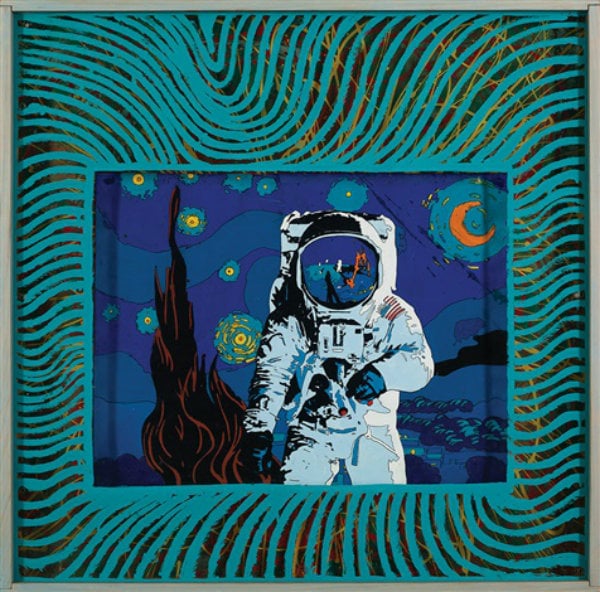Analysis
Market Snapshot: Martin Sharp
The recently deceased graphic artist is more popular now than ever.

The recently deceased graphic artist is more popular now than ever.


Martin Sharp, Man Walking on the Moon, ca. 1972.
Martin Sharp
Australian, (1942–2013)
Josef Lebovic Gallery
Pop artist, underground cartoonist, and chronicler of swinging London, Martin Sharp helped invent the psychedelic aesthetic that would define the look of 1960s counter-culture. Yet, despite the pervasive influence of Sharp’s work, he is hardly collected outside Australia.
In the mid-’60s, Sharp became notorious in Australia for the bawdy cartoons he contributed to underground publication OZ Magazine, which sparked an obscenity trial and resulted in prison sentences for Sharp and his two co-editors. He later relocated to London, where he designed kaleidoscopic, acid-hued posters of Donovan, Jimi Hendrix, and Bob Dylan, and the cover art for Cream’s Disraeli Gears and Wheels of Fire albums.
Sharp’s work is collected by Australian museums, including the Art Gallery of New South Wales and the State Library of New South Wales, which purchased 70 posters, drawings, collages, and ephemera from Sydney-based art dealer Josef Lebovic in 2010 for $220,000. The zany Pop painting Man Walking on the Moon (ca. 1972), depicting an astronaut superimposed over Vincent van Gogh’s Starry Night, broke Sharp’s auction record when it sold at Sydney auction house Lawson-Menzies in June of this year. It brought in $42,709, including a buyer’s premium, well above the $32,919 high estimate.
“The buyers that I have sold to over the last 15 years have been museums and private collectors, very rarely anyone in the rock and roll culture, and 90% of them are in Australia,” Lebovic told artnet via email. “I have not seen the international market attribute the same importance to Sharp’s work as we see here in Australia.”
While Sharp’s paintings remain scarce, there is a healthy domestic market for his posters, which can range in price, selling for as little as $300 to as much as $10,000, depending on rarity and subject matter. Lebovic hopes that a deeper bibliography might raise Sharp’s international profile: “One major thing that is missing about Martin is a book or a number of books on his posters and paintings,” he said. “I have spoken to one of the trustees of his estate, and they feel that maybe that is possible over next few years given the great archive they have of his work.”
For more art market analysis, please visit artnet Analytics.